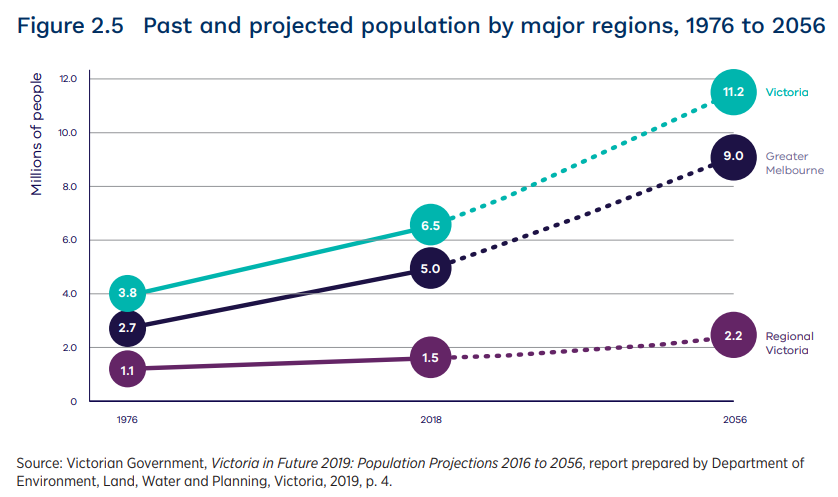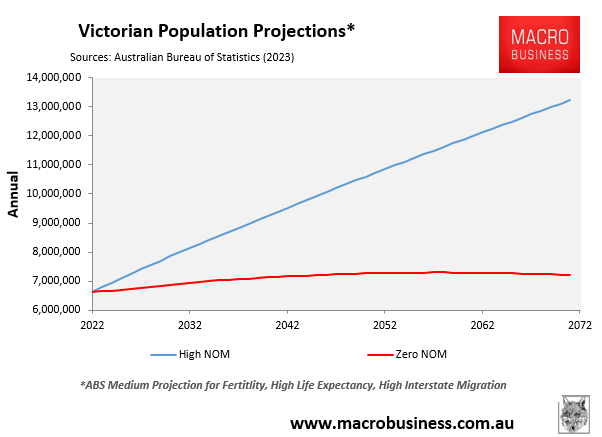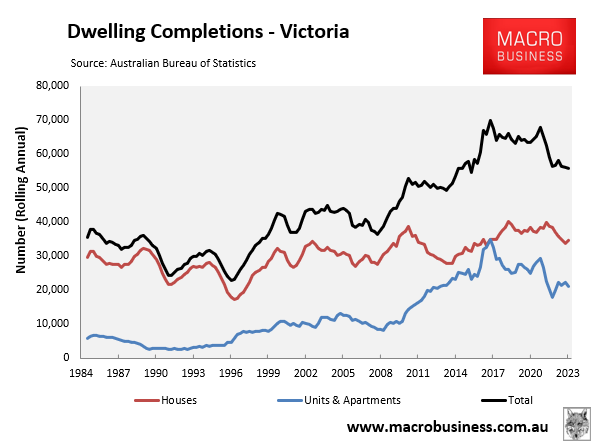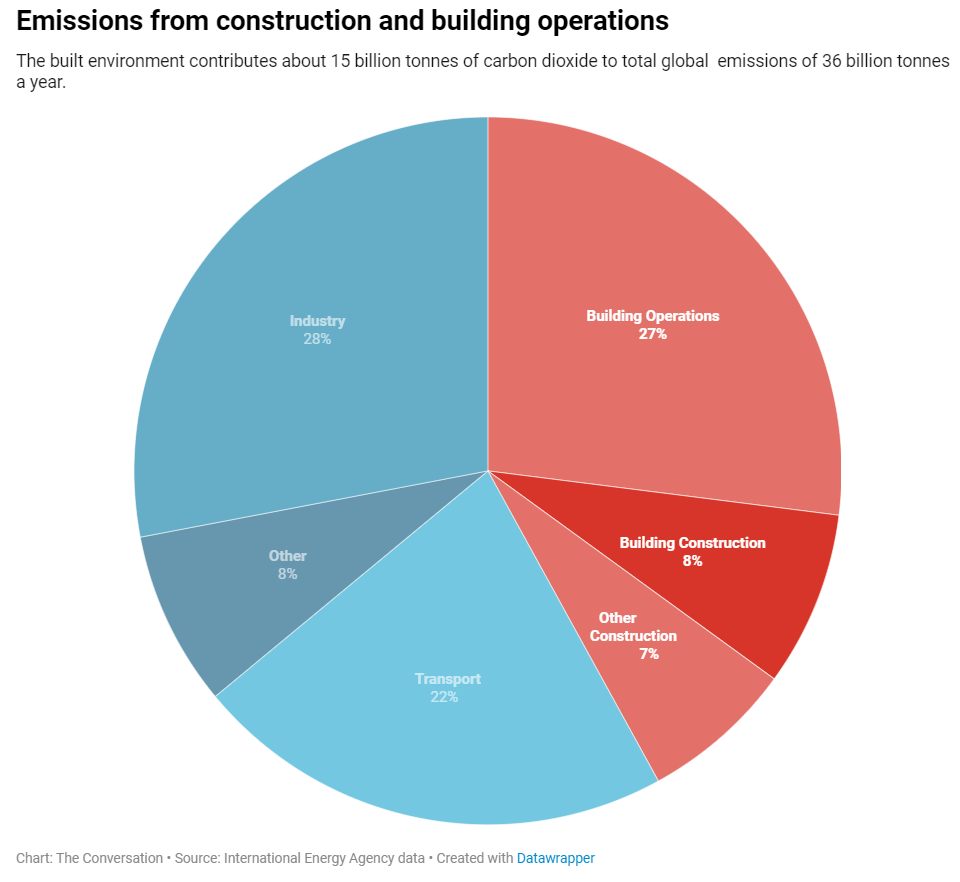The Age newspaper is running a series on measures Victorians are taking to lower the state’s greenhouse gas emissions:

The series is hilarious as it comes amid official state government projections showing that Victoria’s population will balloon to 11.2 million people by 2056, from only 3.8 million people in 1976 and 6.5 million people in 2018:

Net overseas migration (NOM) will be the only factor driving this population expansion. Because without overseas migrants, the state’s population would not grow, according to the Australian Bureau of Statistics:

It is also worth remembering that the Victorian government has set a target to build 800,000 homes across the state over a decade, which requires 80,000 homes annually.
This 80,000 annual target would be a large step up from the state’s historical housing construction performance, which has only ever built 70,000 homes in a 12 month period once in 2017:

The 4.5 million increase in Victoria’s population projected by the state government between now and 2056 will conservatively require the construction of at least two million new homes (net of demolitions), vast tracts of commercial buildings and infrastructure, more energy-guzzling water desalination plants, and so on.
All of this extra homes and infrastructure will necessarily increase Victoria’s carbon footprint (other things being equal).
It was estimated that building construction, operation, and maintenance alone account for roughly one-quarter of Australia’s greenhouse gas emissions.
Researchers from Western Sydney University also showed that construction alone accounts for around 15% of global carbon emissions, whereas building operations contribute 27% of emissions:

Therefore, the more people Australia imports via immigration, the harder it will be to meet ‘net zero’ commitments, as well as safeguard the natural environment more generally:

2021 State of the Environment Report: Population growth has “very high impact” on Australia’s natural environment.
Total environmental impact is equal to population times consumption units. It is basic logic.
Governments and climate change groups speak with a forked tongue when they demand that Australia meet ‘net zero’ while also supporting increasing numbers of energy users via endless population increase via immigration.
Running a high immigration ‘Big Australia’ policy, reducing carbon emissions, and safeguarding the environment are mutually exclusive.

